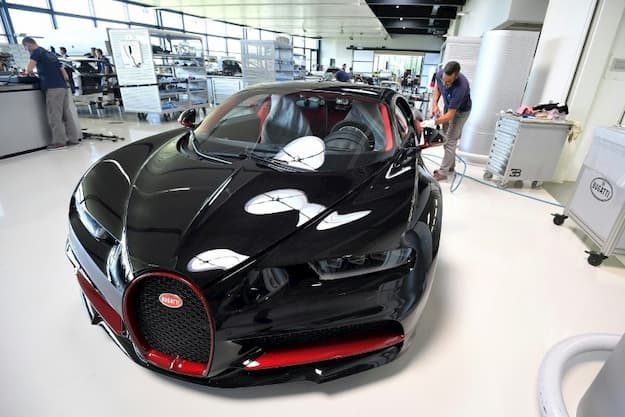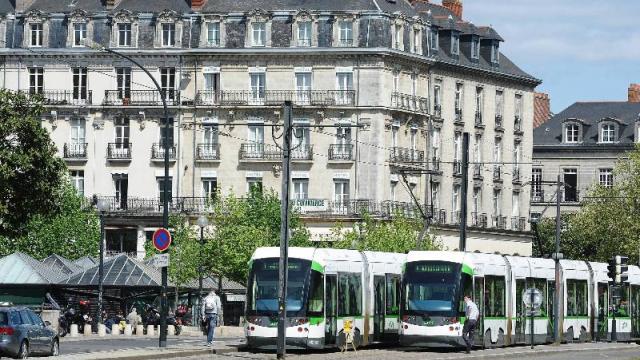The brand has set up its factory in Alsace where it produces the fastest and most expensive cars in the world. Some customers pay up to 2.5 million euros.
The fastest and most expensive in the world: the French car brand Bugatti remains true to its credo of extreme luxury cars, assembled by hand in his workshop in Alsace while considering expanding its customer base.
In Molsheim, west of Strasbourg, the “happy few” offering a sports car at 2.5 million euros (excluding taxes) are welcomed in the castle bought a century ago by Ettore Bugatti. The calm of the place is only disturbed by the roar of a 1500 horsepower engine, at least double the power of a Porsche or a Ferrari.
“If it’s comparable, it’s no longer a Bugatti,” says CEO Stephan Winkelmann, taking the words of the brand’s founder, which opens its doors to the press for its 110th anniversary. More than a century of luxury and car performance, but also chaotic history, interrupted for decades.
First cars in 1909
Born in Italy, the young Ettore Bugatti began to build his own cars in Molsheim in 1909. Between the two World Wars saw the birth of the mythical Type 35, queen of the automobile racing circuit, the Type 57 SC Atlantic and the Royal. But the death in the car of his son Jean, a successor designated in 1939, and the Second World War, which will force Ettore Bugatti to flee to Bordeaux, hasten the decline of the brand. Bugatti will recover his factory in Molsheim after the war but will die in 1947.
The revival will take place only in the 1990s first under the impetus of an Italian entrepreneur, then with the Volkswagen group which bought in 1998 at the same time Bentley, Lamborghini and Bugatti.
The patriarch of the German car giant, Ferdinand Piëch, gives a precise roadmap to his engineers: create a car with the acceleration of a Formula 1, a power of more than 1000 horses, which can run at 400 km / h … all being elegant and comfortable to go to the opera.

An electric car in 2024?
For now, Bugatti builds only one model after another: first, the Veyron, sold 450 copies, and now the Chiron, whose 500 planned units will come out one by one from the workshop Molsheim, again the base camp of the manufacturer. A noisy white workshop, where 25 pairs of hands meticulously assembled the parts made in different European countries.
“There is no job that looks like what we do, no cars like that,” says Loïc, a 32-year-old mechanic, proudly working with a fellow saddler to install the interior equipment for a colour Chiron. plum.
“It’s a bit like the holy grail of the automobile,” adds Alexandre Leyder, 24, hired two months ago and busy pre-assembling a 16-cylinder engine.
Eight weeks to assemble a car
Approximately eight weeks are needed to assemble a car, which will be tested by former race drivers, including Andy Wallace, winner of the 24 Hours of Le Mans, and scanned for six hours under a special light to detect the slightest mini-imperfection of bodywork, completely invisible for a novice eye.
At the back of the shop, five racy cars with characteristic curves of Bugatti are hidden under canvases, their buyers having to have the first time after having waited at least two years between the purchase and the delivery.
Bugatti remains above all a matter of collectors, more than kilometres swallowed. In addition to some celebrities of football or cinema, the owners of Bugatti are 80% of rich entrepreneurs running little with their cars. Barely 2,000 kilometres per year for those currently in circulation, some are only admired in a garage.
But now, after 76 cars made in 2018, Bugatti feels ready to produce much more at Molsheim and to launch, in parallel with the Chiron, in the construction of a second model. “It would be a car that you could use daily,” plans Stephan Winkelmann by 2024. With a price “always luxury”, but less, and possibly four places.
“An electric battery vehicle is one of the options I am very much in favor of. But no decision is made. “
Meanwhile, luxury remains at its peak. At the Geneva Motor Show in March, Bugatti unveiled “The Black Car”, a unique copy worth € 11.5 million (excluding taxes). His buyer is unknown. The rumour evokes Ferdinand Piëch, 82, now removed from Volkswagen.





